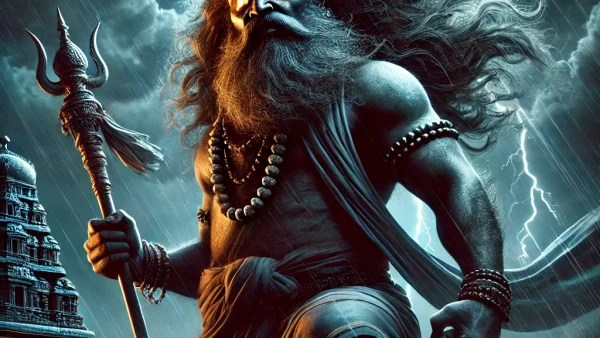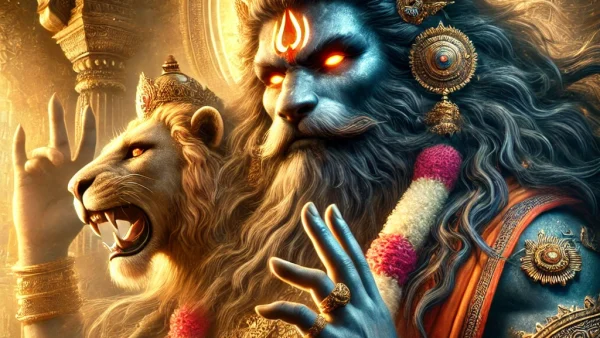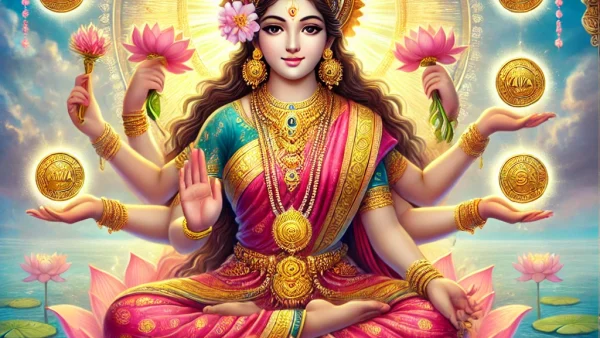Birth of Ayyappa Swamy
Ayyappa Swamy, also known as Manikandan or Ayyappan, is a revered Hindu deity worshipped predominantly in South India. His story is a divine saga of celestial lineage, bravery, and spiritual wisdom. The fascinating narrative of Ayyappa is rooted in Hindu mythology, where he is celebrated as the child born from the union of Lord Shiva and Mohini, the female avatar of Lord Vishnu. Ayyappa’s tale encapsulates profound teachings, heroic adventures, and unwavering devotion, making him a symbol of righteousness and unity.
The Divine Origins of Ayyappa Swamy
The Unique Parentage: Shiva + Vishnu
The birth of Ayyappa Swamy is an extraordinary episode in Hindu mythology. The world faced destruction at the hands of Mahishi, a demoness blessed with a boon from Lord Brahma that rendered her invincible—except to a child born from the union of Shiva and Vishnu. To fulfill this unique condition, Lord Vishnu assumed the form of Mohini, a mesmerizing female avatar, and united with Shiva. Thus, Ayyappa was born to rid the world of Mahishi’s tyranny.
Abandonment and Adoption
After his birth, Ayyappa was left on the banks of the Pampa River. There, King Rajashekhara of the Pandalam dynasty, a childless monarch, discovered the infant adorned with a golden bell around his neck. The King named him Manikandan—”the one with the golden bell”—and adopted him, raising him as his own son.
The Life and Adventures of Ayyappa Swamy
A Prodigy of Strength and Knowledge
As a prince of Pandalam, Ayyappa excelled in martial arts, Shastras (scriptures), and spiritual wisdom. His exceptional abilities distinguished him, earning admiration and respect throughout the kingdom. However, his divine origins sparked envy and suspicion in some quarters, especially from the Queen, who favored her biological son, Raja Rajan.
The Tigress Mission
In a dramatic twist, the Queen feigned a mysterious illness and declared that only tiger’s milk could cure her. Ayyappa, out of his selfless nature, undertook the perilous task of retrieving the milk. This journey was pivotal as it led him to confront Mahishi. Realizing his purpose, Ayyappa battled Mahishi in a fierce duel, ultimately vanquishing her and granting her moksha (liberation).
Renunciation of Worldly Life
Upon his victorious return, King Rajashekhara offered Ayyappa the throne, recognizing his divine nature. However, Ayyappa, embodying detachment and spiritual resolve, chose renunciation over kingship. He retired to the forest to meditate and attain higher spiritual knowledge, marking the beginning of his divine legacy.
Sabarimala Temple: The Eternal Abode of Ayyappa
The Divine Construction
The Sabarimala Temple, nestled in the serene Western Ghats of Kerala, is the spiritual epicenter of Ayyappa worship. King Rajashekhara, under Ayyappa’s guidance, constructed the temple with the help of Vishvakarma, the celestial architect. The idol of Ayyappa was sculpted by Sage Parasurama and consecrated on the auspicious day of Makara Sankranti.
The Pilgrimage Rituals
The temple draws millions of devotees annually, especially during the Mandala season (November to January). The pilgrimage is marked by a rigorous 41-day penance involving:
- Celibacy
- Fasting and abstinence from alcohol
- Wearing black or blue attire
- Chanting “Swamiye Saranam Ayyappa” as a mark of surrender to the deity.
Inclusivity and Controversy
The Sabarimala Temple is a symbol of inclusivity, welcoming devotees from all castes and faiths. However, the tradition barring women of menstruating age (10-50 years) has sparked intense debate and legal challenges, highlighting the tension between tradition and modernity.
Symbolism and Teachings of Ayyappa Swamy
Unity in Diversity
Ayyappa’s story bridges faiths and philosophies, symbolizing the unity of Lord Shiva’s asceticism and Lord Vishnu’s nurturing energy. His life is a testament to overcoming inner demons, devotion, and self-discipline.
Philosophical Teachings
Ayyappa’s teachings encourage:
- Spiritual Growth: Prioritizing the soul over material possessions.
- Humility and Service: Serving others selflessly.
- Moral Integrity: Upholding righteousness even in adversity.
Real-Life Anecdotes: Ayyappa’s Influence
Many devotees share transformative experiences after undertaking the Sabarimala pilgrimage. Stories abound of individuals overcoming personal challenges, finding spiritual clarity, and fostering communal harmony, inspired by Ayyappa’s teachings.
Ayyappa Swamy, A Beacon of Devotion and Unity
Ayyappa Swamy is not just a deity; he is a spiritual guide, warrior, and embodiment of divine principles. His life story resonates with values that transcend religious boundaries, making him a beacon of hope and righteousness. For those who seek spiritual enlightenment, Ayyappa Swamy’s journey offers profound lessons in devotion, humility, and the pursuit of higher truths.
So, who is Ayyappa Swamy? He is the divine bridge between faith and humanity, the conqueror of evil, and the eternal symbol of unity. Let us remember his teachings as we strive to overcome the Mahishis within us and walk the path of virtue and enlightenment.
Frequently Asked Questions
Q: Why is Ayyappa called Manikandan?
A: He was discovered with a golden bell (mani) around his neck by King Rajashekhara, earning him the name Manikandan.
Q: What is the significance of Sabarimala?
A: It is the temple dedicated to Ayyappa, symbolizing spiritual discipline, inclusivity, and devotion.
Q: What does “Swamiye Saranam Ayyappa” mean?
A: It translates to “Oh Lord Ayyappa, I surrender to you,” expressing devotion and surrender to the deity.







Pingback: Who is Kanni Swamy? Guide for Devotees of Ayyappan - Spiritual Guru